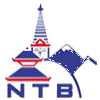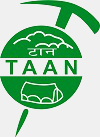1. Dhorpatan Hunting Reserve
Area: 1325sq. km Established: 1983 and gazetted in 1987
Location: Dhorpatan hunting reserve adjoins Rukum, Myagdi and baglung districts in the Dhaulagiri Himal range in west Nepal. Putha, churn and gurja Himal extend over the northern boundary of the reserve. This is the only hunting reserve in the country, attracting Nepalese and foreign hunters with blue sheep and other game animals. The reserve is divided into six blocks for hunting management purposes. The reserve is characterized by alpine, sub alpine, and high temperate vegetation. Common plant species include fir pine, birch, rhododendron, hemlock, oak juniper and spruce. Pastureland at higher elevations occupies more that 50% of the total area of the reserve. The reserve is one of the prime habitats for blue sheep, a highly coveted trophy. Other animals found there are: leopard, goral, Serow, Himalayan Tahr, Himalayan black bear, barking deer, wild boar, rhesus macaque, langur and mouse hare. Pheasants and partridges are common and their viable population in the reserve permits controlled hunting. Endangered animals in the reserve include musk deer, wolf, red panda, cheer pheasant and Danphe (Lophophorus). Special permits required for hunting.
2. Koshi tappu wildlife reserve
Area: 175sq. km. Established: 1976
Location: Koshi Tappu wildlife reserve lies on the flood plains of the Sapta Koshi in Saptari and Sunsari districts of eastern Nepal. The eastern and western embankments of the River define the reserve. Rapid and complete inundation of the reserve to depths ranging from 10 to 300 cm occurs during the monsoon. The sapta Koshi River also changes its course from one season to another. The vegetation mainly includes tall khar pater grassland with few patches of khair sissoo scrub forest and deciduous mixed Riverine forest. The reserve offers important habitat for a variety of wildlife. The last surviving population (about 100 individuals) of wild buffalo or Arna is found here. Other mammals are the hog deer, wild boar, spotted deer, and blue bull. The reserve also assists the local economy by providing fishing permits and allowing the collection of edible fruits and ferns in season. 280 different species of bids have been recorded in the reserve. These include 20 species of ducks, 2 species of ibises, many storks, egrets, herons and the endangered swamp partridges and Bengal floricans. The Koshi barrage is extremely important as a resting place for migratory birds. Many species recorded here are not seen elsewhere in Nepal. The endangered gharial crocodile and gangetic dolphin have been recorded in the Koshi River.
3. Parsa wild life Reserve
Sabai grass, a commercially important species, grows well along southern face of the Churiya hills. The reserve supports a good population of resident wild elephant, tiger, leopard, sloth bear, gaur, blue bull, and wild dog. Other common animals are Sambar, chital hog deer, barking deer, languor, striped hyena, palm civet and jungle cat. There are nearly 300 species of birds in the reserve. Giant hornbill, peafowl, red jungle fowl, flycatchers and weedpeckers are a few of the other common birds found in the reserve. Many kinds of snakes including king cobra, common cobra, crait, rat snake and python are found in the reserve due to hot tropical climate.
4. Shuklaphanta wildlife reserve
Other wild animals in the reserve are wild elephant, tiger, hispid hare, blue bull, leopard chital, hog deer, and wild boar. A total of 200 species of birds have been recorded in the reserve. Many grassland birds along with the rare Bengal florican can be seen in the phantasm. Marsh mugger, Indian python, monitor lizard and snakes like cobra, krait and snake are recorded in the reserve.
5. Makalu Barun national park
There are 47 varieties of orchids, 67 species of economically valuable medicinal and aromatic plants, 25 of Nepal’s 30 varieties of rhododendron, 19species of bamboo, 15 oaks including arkhoulo, 86 species of fodder trees and 48 species of primrose. Over 400 species of birds have been sighted in the Makalu and Barun area. Two of the species had never been seen else where in Nepal . They are the spotted wren babble and the oklive ground warbler. Wildlife includes the endangered red panda, musk deer, Himalayan black bear, clouded leopard and possibly snow leopard in addition to more substantial populations of goral, Himalayan Tahr, wild boar, barking deer, Himalayan marmot and weasel, common languor monkey and the Serow. The Arun River system contains 84 verities of fish. Some 32000 people inhabit the conservation area.
6. Rara national park
Rara national park(106sq km) is located in North-west Nepal about 371km air distance from Kathmandu. Most of the park area including Lake Rara, lies in Mugu district, a small area adjoins Jumla district of karnali zone. This is the smallest park in Nepal, containing the country’s biggest lake (10.8 sq. km) at an elevation of 2990m. Park elevations range from 2800m to 4030m. The park contains mainly coniferous forest.
The area around the lake is dominated by blue pine, black juniper, west Himalayan spruce, oak, Himalayan cypress and other associated species, at abut 3350m, pine and spruce give way to fir, oak and birch. Deciduous tree species like Indian horse chestnut, walnut and Himalayan popular are also found. A small portion of the park serves as an ideal habitat for musk deer.
Other animals found in the park include Himalayan black bear, leopard, goral, himayan Tahr, and wild boar. Snow trout is the only fish species recorded in the lake. Resident gallinaceous birds and migrant waterfowl are of interest to park visitors. The greatcrested grebe, black necked grebe, and red crested pochard are seen during winter. Other common birds are the snowcock, chukor partridge Impeyan pheasant, kalij pheasant, and blood pheasant.
7. Bardia National park
Bardia National park is situated in the mid-far western Terai, east of the Karnali River. It covers 968sq km of land, the largest and most undisturbed wilderness area in the Terai. About 70% of the park is covered with dominantly Sal forest with a balanced mixture of grassland, savanna and Riverine forest.
Approximately 1500 inhabitants of this valley have been resettled elsewhere. Since farming has ceased in the Babai valley, natural vegetation is regenerating, making it an area of prime habitat for wildlife . The park provides excellent habitat for endangered animals like the rhinoceros, wild elephant, tiger swamp deer, black buck, gharial crocodile, marsh mugger crocodile and gangetic dolphin.
Endangered birds include the Bengal florican, lesser florican and Sarus crane. More than 30 different mammals, over 200 species of birds, and many snakes, Lizards and fish have been recorded in the park’s forest, grassland and River habitats. A good number of resident and migratory birds are found in the park.
8. Chitwan National Park
There are more than 43 species of mammals in the park. The park is especially renowned for the endangered one- horned rhinoceros, the tiger and the Gharial crocodile along with many other common species of wild animals. It also harbors endangered species such as gaur, wild elephant, four-horned antelope, striped hyena, pangolin, gangetic dolphin, monitor lizard and python. Other animals found in the park include the sambar, chital, hog deer, barking deer, sloth bear, palm civet, languor and rhesus monkey.
There are over 450 species of birds in the park. Among the endangered birds are the Bengal florican, giant hornbill, lesser florican, black stork and white stork. Common birds seen in the park include the peafowl, red jungle fowl, and different species of egrets, herons, kingfishers, flycatchers and woodpeckers. The best time for bird watching is March and Deccember.
More that 45 species of amphibians and reptiles occur in the park, some of which are the marsh crocodile, cobra, green pit viper and various species of frogs and tortoises. The park is actively engaged in the scientific studies of several species of wild fauna and flora.
--Hari Sharan Bhuju










